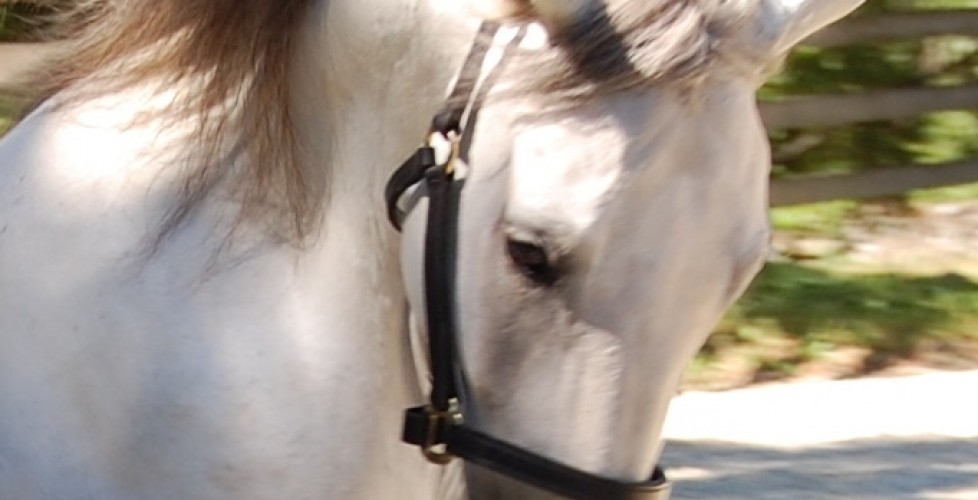It started with a CLICK!
Can it be this simple? Clicker training – or positive reinforcement for desired behavior – traces back to the 1980s and dolphin training. As a training tool, clicker training stands in direct contrast to virtually all horse training methods, which use negative reinforcement… or mostly negative… reinforcement to train horses.
Years ago, I had dallied with the idea of rewards-based training, but I was dissuaded from its use after speaking to Anouk, a burgundy-haired trick rider who performed a liberty horse act for the circus. Very familiar with animal training, she had nothing good to say about positive reinforcement techniques. “We do not use methods that give treats,” she emphasized, “because in the circus, the animal must ALWAYS perform the trick, whether they are hungry or not.” Positive reinforcement could never be relied upon, she insisted, only negative reinforcement.
To be sure, negative reinforcement has been the dominant training method used with horses. If the trainer wants the horse to move back, for example, she applies pressure to its chest, immediately easing up on the pressure as the horse steps back. If she wants the horse to move to the side, she applies pressure to the side, releasing it as soon as the horse moves away. The metal bit applies pressure to the mouth, and as soon as the horse responds with the correct head/neck flexion, the pressure is removed. Until very recently, almost every horse trainer (including most so-called natural trainers) used negative reinforcement, applying physical or psychological pressure to the horse, and stopping the pressure as soon as the horse performed the desired behavior.
So what changed my perception of positive reinforcement? A friend, Karen Jones, rescued a badly abused Lipizzan/Andalusian gelding, and she found that traditional training methods did little to overcome his severe fear and extreme emotional blow-ups (so extreme that she was advised to euthanize him during her first months of owning him). Struggling with a way to give her damaged horse a clear understanding of what she wanted and then reward him for positive behavior (not just punish him for incorrect guesses), Karen resorted almost exclusively to clicker training.
The results with her horse were nothing short of amazing. Her success prompted me to investigate clicker training anew and then implement it for our horses, and it’s proving to be very successful and popular at our farm!
Susan
